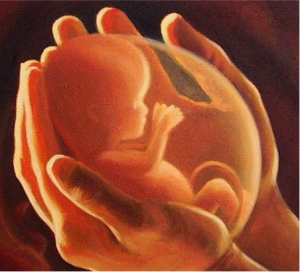The moral issue involved in Case 5.4 Protecting an “Unborn Child,” is the dilemma of placing the mother, “G”, into a treatment facility against her will. The desire to place G into the treatment facility stems from the fact that G is addicted to glue-sniffing and the use of other solvents and is currently pregnant. G’s previous children have all been taken into the Winnipeg Child and Family service, and two of the children were “both physically and mentally damaged from birth as a result of their mother’s solvent addictions”(pg 201WG). Based on these results, it would seem logical to infer that without intervention of G’s addictive habits, her next child would have a significant chance of enduring physical and/or mental damage.
Johns Hopkins has a Center for Addiction and Pregnancy (CAP), which offers substance abuse treatment, psychiatric evaluation and care, obstetric evaluation and care, pediatric health care, and overnight stay services. The barriers of transportation and inconvenience are diminished in this program as CAP provides “comprehensive health care and complementary services in one convenient location” (Brooner, R). There are many treatment facilities like this available around the country for women like G, and thus G should take advantage of the opportunity to improve the health of her child.
The dilemma that is at stake here is one of autonomy versus non-maleficence. If the situation was to take place with autonomy for living beings predominating, than it could be suggested that the respect of the mother’s wishes take precedence and she not be placed in a treatment facility. However, if the argument were made in favor of non-maleficence, than there would be good reason to place the mother in a treatment facility. In an attempt to minimize the harm in this situation, the health of the unborn fetus should be considered greatly. One might argue that placing the mother in a treatment facility would harm her as it would go against her wishes, but this is not the opinion that should take priority. The mother is currently engaged in activities that are considered harmful, and thus society should not act to minimize her harm over the harm of the unborn fetus, which is only vulnerable to the actions of the mother.
In my opinion, it is our responsibility as a society to look out for the health of the unborn fetus. The case goes in to explain that it could become a “slippery slope” to limit freedoms on glue-sniffing while pregnant. Chief Justice Antonio Lamer expresses concerns that, “if we prevent pregnant women from sniffing glue…we will end up preventing women from drinking alcohol” (pg 204), a concern I do not find distressing. A pregnant woman should not be drinking alcohol. When a woman is pregnant it is her duty to provide the best nurturing environment for the unborn fetus as she is capable of providing. And yes, I feel this includes minimizing exposure to second hand smoke as much as possible, along with eliminating glue-sniffing, alcohol, and any other toxin that could reach the unborn fetus. Although it may go against the mother’s autonomy to “coerce and compel” her into treatment, now that she is pregnant it is not only her autonomy, but also the autonomy of the unborn fetus must be taken into account (pg205).
References:
Brooner, Robert, Ph.D. “Center for Addiction and Pregnancy (CAP).” Http://www.hopkinsmedicine.org/psychiatry/bayview/medical_services/substance_abuse/center_addiction_pregnancy.html. N.p., n.d. Web.
Thomas, John E. 1926-. “Case 5.4: Protecting an “Unborn Child”” Well and Good. a Case Study Approach to Health Care Ethics. 4th ed. Peterborough, Ontario: Broadview, 2014. N. pag. Print.
Image citation:
“Mother To Unborn Daughter Quotes – Viewing Gallery.” Mother To Unborn Daughter Quotes – Viewing Gallery. N.p., n.d. Web. 30 Jan. 2015.

I think the dilemma that is at stake is whether to send the woman into treatment against her will for the sake of the child or not to send her into treatment against her will for the sake of the mothers wishes. Both options infringe on the non-malefecence principle. In the case of not sending the mother to care her unborn child would be subject to harm. Whereas sending the mother to care would probably cause her stress and unhappiness. With those things stated, I do very much agree that as far as people’s wishing being prioritized the unborn child should take precedence over the mother. I feel the child status is that much more than the mothers because he/she has not autonomy of their own to exercise. The unborn child can not request for the mother to stop sniffing glue or get treatment thus it is up to society to protect the well-being go this unborn child.